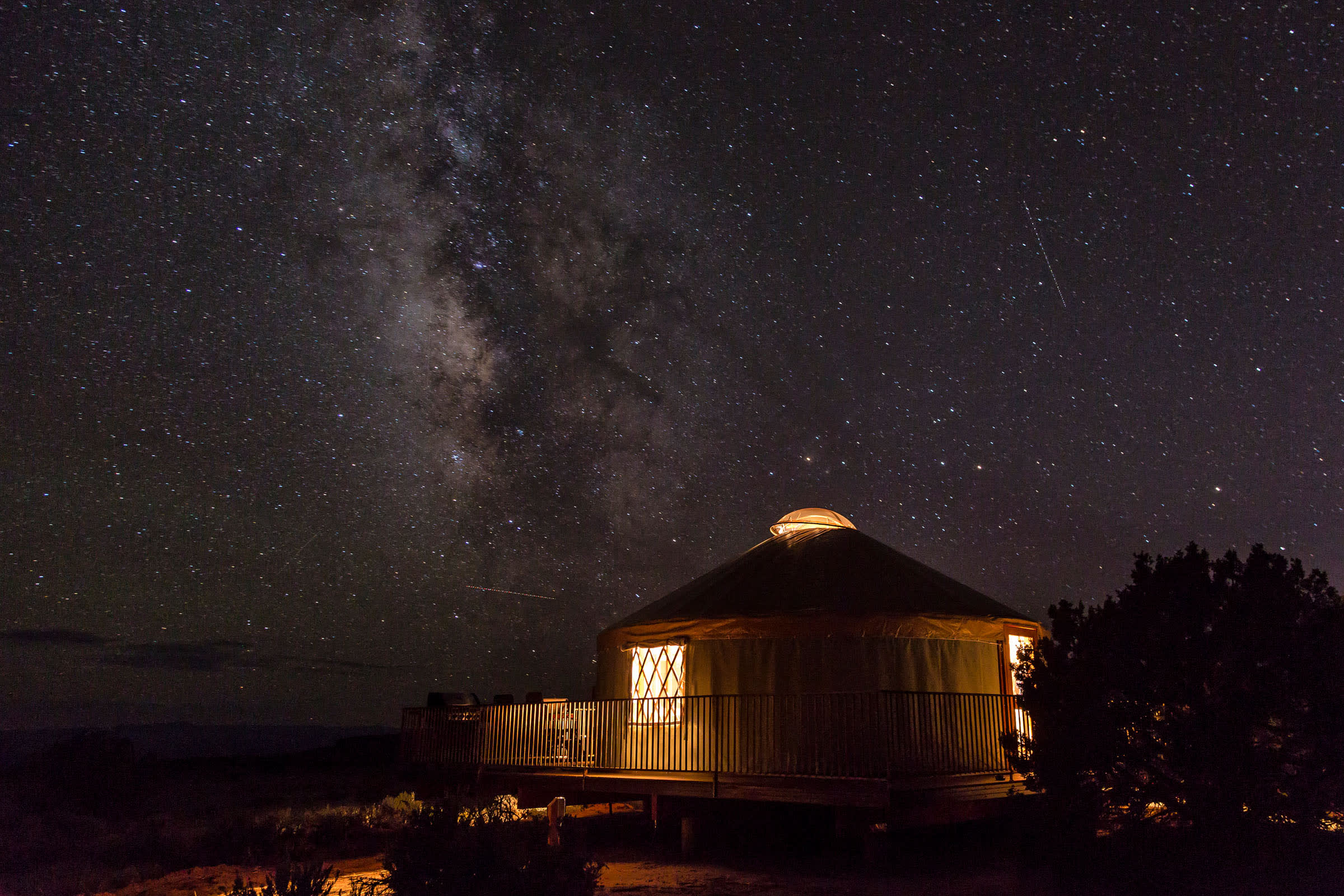
Top 5 Star Gazing Spots in Utah
Utah's Dark Skies are Ideal for Astro-Tourism
If you think the International Dark Sky Association sounds like a secret one-world government plot to dismantle electric infrastructure and return humanity to the Ice Age, RELAX. The IDSA is a group of benevolent scientists working to protect natural areas from light pollution! Thank these local Luddites by heading to Utah’s five star-studdedest hills, where you can normalize your circadian rhythm and reintroduce yourself to the neighboring galaxies.
5. Antelope Island State Park | Davis County
You feel bad for your urban friends in Salt Lake. You really do. While they are going to sleep on a measly diet of 500 stars, you’re gorging on the 1,500 stars visible from the west side of the island. And you get to gaze alongside some bison, shorebirds and maybe even Moon Unit Zappa, who is bound by the impudent name choices of her rock ’n’ roll parents to seek out the dark side.
4. Bryce Canyon National Park
Bryce park rangers throwin’ some shade, yo. They claim their park is sooo dark that even Venus and Jupiter cast shadows. Then they talkin’ ’bout how they got the last grand sanctuary of natural darkness, the Jungian archetype of LIGHTS OUT, and you’re like I get it already, just make a rap video about it for (the) heaven’s sake, and they’re like Fine: Our (view of the) Milky Way brings all the boys to the yard, They’re like, it’s better than all the other parks, We’re like, we’ll teach you, but we’ll have to charge the park entrance fee.
3. Arches National Park
You’re not an elitist, you just like to do things that 99% of the world population can’t do. You know, like buying small islands and enrolling your toddler in CEO prep courses and insisting on unbleached coffee filters. Oh, and camping out at Arches and seeing the Milky Way span the sky in all its misty glory, then buying up every last star in the name-a-star registry, thereby destroying the dreams of uncountable budding astronomers and husbands with poor gift tastes. As the 1% say: Make it rain!
2. Cedar Breaks National Monument
Don’t feel like you got enough Milky Way at Arches? That’s because you deserve more. So head on over to this mini-Bryce and fill up on your gazing birthright, then come home and organize fancy dinner parties based entirely on your desire to say: “Oh, you haven’t seen the Milky Way? Well, that makes sense. Most people in the world never do.” Make a sympathetic face and pass them your signature perfect soufflé. They’ll hate you and you’ll love yourself, and isn’t that what confidence is all about?
1. Natural Bridges Natural Monument
Move over Six Flags. Have fun with your crumbling castles, Disneyland. And Knott's Berry Farm, we don’t even have words — it wasn’t our idea to build a theme park based on jelly sales. The good news is you’ll all be equally irrelevant when the amusement-seeking public learns about Natural Bridge’s first-ever Dark Sky Park. Why would they want your log rides and Michael Jackson Experiences when they can sail through the night sky slowly and on foot, appreciating the glacial unfurling of the known universe as they contemplate their own smallness? Answer: They won’t. And as soon as the Monument patents its own slushy lemonade and monetizes photo-ops with life-size astrologers, the ascendancy will be complete.
Travel Facts: There's Lots To See
If you’re bored then you’re boring, as they say. Can’t find a strange creature in the skyscape that you can base an entire mythology on? You’re not looking hard enough! Just pretend you’ve spotted a rat riding a dragon’s back, and keep pointing and saying, “No, just to the right of the cowboy on the bronco — to the right.” While they’re searching, distract them with these facts:
- The night sky is divided into 88 constellations, most of which are visible from the United States at different times of the year.
- On a clear, moonless night, a thousand or more stars are visible.
- Five of our solar system's other seven planets, a few star clusters, a spiral galaxy and the odd bright comet are visible, too.